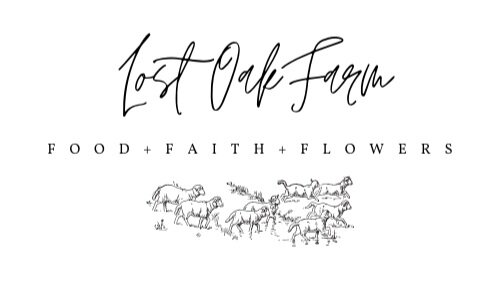What do you do with hair sheep?
5 Outlets for Shepherds
My sheep conversations usually start with one inevitable question:
“How often do you have to shear them?”
“We don’t! Hair sheep just shed their winter coat.”
“Oh… but if they don’t have wool, what do you do with them?”
I try to explain the “short and sweet” version of what it is we actually do with the sheep. No wool no profit, right? Unfortunately, there isn’t just one straightforward answer. There are a few possibilities, and sometimes it’s necessary to take advantage of multiple.
It’s a niche market for sure. I love that fact, because I think that makes hair sheep special. However, that is also likely the reason they are fairly unknown, underrated, and underrepresented.
With that being said, I wanted to lay out some of the possibilities for, benefits of, and possible profits from hair sheep.
Whether you’re just curious about the logistics of our sheep farm or considering diversifying your farm, I hope this helps!
1. Stockyard
Okay, let’s start with the hard part:
Hair sheep are used for meat.
Yes yes, I know that when you hear “lamb chops”, you imagine an adorable 8 pound newbie with perky ears and a pink nose (like the cutie above). That makes us sound a bit heartless. In reality, when you sell hair lambs intended for slaughter at the stockyard, they average 50-80 pounds.
The stockyard employees grade the livestock, meaning that they group the animals based on their weight, build, etc., for the sale. Once sold in large group, they are hauled to processing facilities.
PROS:
It is a great safety net. Even though the prices will fluctuate, this is a guaranteed outlet/buyer.
You can unload your crop all at once. Load up your lambs and drop them off. It’s easy.
It’s also pretty exciting to go watch the sales when you’re invested!
CONS:
You are at the mercy of the market. The prices fluctuate, and once you have dropped your lambs off on sale morning, you are stuck with whatever price they bring. There is no negotiating.
Sheep and goat sales happen far less frequently that cattle sales. Our local sale is once a month. It can be tricky to balance the changing market, expected weight gains, and a timeline.
2. Slaughterhouse
There is also the option to take your lambs directly to the slaughterhouse and bypass the stockyard altogether.
PROS:
Again, you have the ease of selling your entire group at once.
You can bypass the cut of each sale that is retained by the stockyard.
Most importantly (I would argue), you can lock in a price. Call before and the slaughterhouse can tell you what they will pay per pound. Obviously there isn’t an opportunity to negotiate, but it is a guarantee not offered by the stockyard.
CONS:
Depending on your location, this could mean a loooong drive and looooots of gas money. It may require a large lamb crop to make the commute worth it.
3. Replacement Ewes & Rams
To divert away from the slaughter route, you also have the option to raise and sell lambs to other shepherds as breeding stock.
PROS:
There is the potential to make a higher profit. When looking for breeding stock, shepherds typically desire parasite resistance, high milk production, mothering instincts, etc. Therefore, this demands superior genetics within your flock and your ability to breed for those desired traits.
Personal Satisfaction 1: It is honestly just a good feeling to know that you raised sheep who will be appreciated and will raise their own babies.
Personal Satisfaction 2: One of my favorite parts of sheep farming is to teach people about sheep! It is such a joy to answer questions and be able to give people (especially new shepherds) advice that we had to learn the hard way.
CONS/Hard Work Involved:
Higher upfront investment. This market requires superior breeding ewes, who, not surprisingly, cost more money.
Your notetaking must be perfect.
It can be tough to advertise your lambs and reach other farmers. You have to communicate with large amounts of people, discuss prices, and arrange farm visits.
It takes longer to sell your entire lamb crop.
4. Meat
The stress of the past year partnered with grocery store shortages, high prices, and scares has raised the popularity of direct marketing of meat. There has been a revitalization of the desire to buy meat directly from a farmer whose hand you can shake and practices you can witness.
Not surprisingly, there are some extra and fairly specific hoops you have to jump through to sell meat, such as using a USDA inspected butcher and passing an inspection from your local health department. With that being said, this is considered a value-added product for a reason.
Our next processing date is at the end of June. We’d love to provide you a half, a whole, or individual cuts of lamb!
5. Personal Lawn Mower
You laugh, but it’s true. These fatties will eat everything. They keep our fence lines relatively clean, our pastures clipped down, and, most importantly to me, they love poison ivy.
I actually had an old friend reach out recently, because he was interested in getting some sheep to maintain pasture. If you have a hillside or pasture that’s a pain to bushhog or mow, sheep would be thrilled to do your chores for you.






